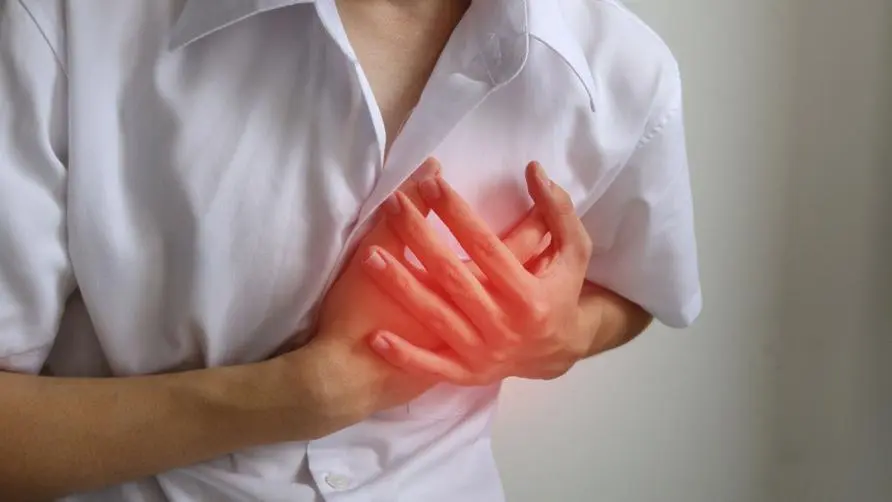A 30-year-old woman suffers from "irrhythmia" more than 10,000 times a day! Medical "1 treatment" stopped her heart from beating wildly

A 30-year-old woman’s heart unexpectedly contracted prematurely. “1 treatment” stopped her heart from beating randomly.
A 30-year-old young woman came to the outpatient clinic for treatment due to palpitations and chest pain. A series of examination reports showed that the woman’s heart function was good and there were no structural abnormalities. However, her 24-hour electrocardiogram showed that she had more than 100 heart attacks a day. “Premature ventricular contraction” at 10,000 beats, so oral medication was started. However, after many drug adjustments, his symptoms and the number of arrhythmias still could not be alleviated, so he was transferred to the cardiac electrophysiology department for further electrophysiological cauterization surgery.
However, traditional electrocautery surgery for arrhythmia uses X-ray radiation to see through the heart, helping doctors place the catheter in the right place, thereby making the correct diagnosis and treatment. However, the patient was worried that the radiation exposure during the examination might cause sequelae, so he was unable to receive electrocautery treatment. After detailed discussions and communication between the doctor and the patient, the patient finally underwent cauterization with a 3D stereotactic system, which accurately and successfully treated the ventricular arrhythmia lesions in a relatively low-radiation environment. The heart finally stopped beating randomly and no longer needed to take medicine.
The number of arrhythmias exceeds 10,000 times a day! How to improve “ventricular arrhythmia”?
The beating of the human heart is controlled by the “sinoatrial node” in the right atrium. Electrical stimulation is transmitted from the atrium to the ventricle through the “atrioventricular node”, causing the heart to contract to maintain normal blood pressure and the blood supply required by the body. Under normal circumstances, human heartbeat is regular at rest, and the total number of heartbeats per day is about 12,000-15,000.
“Premature ventricular contraction” is caused by the ectopic rhythm point of the ventricle emitting an excitement wave to cause the ventricle to contract prematurely. Generally speaking, early ventricular contraction does not cause life danger, so drug treatment is still the first choice, but in some cases For patients with high frequency of arrhythmia (more than 6,000-10,000 arrhythmias per day or more than 5-10% rate), abnormal cardiac systolic function, and obviously unbearable symptoms, electrophysiological cautery treatment can often achieve immediate results. As a result, the patient’s number of post-operative attacks has been significantly reduced and even cured.
It is expected to achieve the goal of “zero radiation treatment”! What is the difference between “3D electrocautery surgery” and traditional surgery?
Generally, traditional arrhythmia electrocautery surgery uses X-rays to see through the heart to help doctors conduct accurate electrical diagnosis and cauterization treatment of cardiac catheterization. But for children, young women, pregnant women, and even doctors, exposure to radiation is not a good thing for the human body.
In contrast, the 3D stereotaxic system allows the computer to locate the relative position of the catheter and the heart by placing a patch on the patient’s body. It can achieve the same effect as traditional X-ray fluoroscopy without requiring radiation exposure, and not only reduces the amount of radiation , reduce patient risks, and even achieve the zero-radiation target, and the positioning is more accurate than traditional X-ray fluoroscopy, so it is a great boon for the treatment of arrhythmia.
At present, “low-radiation 3D stereotactic cautery” is mainly used in patients with paroxysmal supraventricular pulses, early ventricular contraction and typical atrial flutter, but it may also be used in other arrhythmias in the future. Furthermore, health insurance covers 3D stereotactic system cauterization for complex ventricular arrhythmias, but if young or pregnant people suffer from general upper ventricular arrhythmias, they must pay for it at their own expense.
Isn’t it enough to just quit smoking and drinking? Doctors reveal health care methods for ventricular arrhythmia
The most common type of early ventricular contraction is “unexplained”. It mostly occurs in middle-aged women. Usually the patients are in good health, but their heart beats wildly. This type of arrhythmia and abnormal discharge are mostly located in the right ventricle. Near the exit. Most of them are benign and can be prevented by adjusting daily life patterns, such as getting enough sleep, maintaining emotional stability, regulating stress appropriately, quitting smoking, and avoiding excessive alcoholic and caffeinated drinks.
In addition to unknown causes, ischemic heart disease (myocardial infarction) is also another important cause of premature ventricular contraction. In addition, if the heart has genetic defects or structural heart disease, premature ventricular contraction will also occur, and may even induce more serious symptoms. Frequent ventricular pulses are life-threatening, so drug treatment and electrocautery surgery are necessary.
Further reading:





